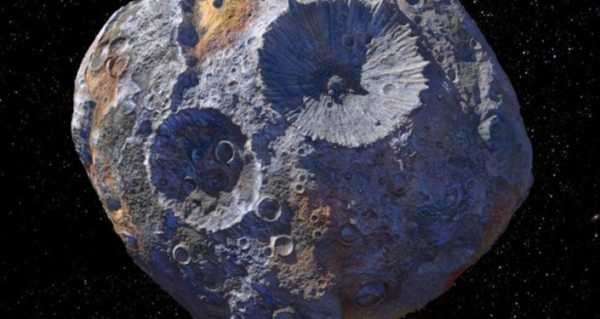
Researchers say new information gathered on the asteroid 16 Psyche – a 140-mile-long minor planet situated within the main asteroid belt orbiting between Mars and Jupiter – via the Hubble Space Telescope (HST) will provide astronomical scientists with a clearer view of the rare metal asteroid and possibly provide insight on planetary formation.
Southwest Research Institute planetary scientist Dr. Tracy Becker announced in a Monday news release that her latest authored study, entitled “HST UV Observations of Asteroid (16) Psyche,” was officially published the same day in The Planetary Science Journal.
Research conducted by Becker and eight other scientists relied on the HST’s Space Telescope Imaging Spectrograph instrument to conduct two separate observations of the metal asteroid at ultraviolet (UV) wavelengths.
Researchers with Arizona State University declared to CBS News in 2017 that the asteroid – located some 230 million miles from Earth – would be worth around $10,000 quadrillion if its resources were harvested and sold.
While 16 Psyche was first discovered in March 1852 by Italian astronomer Annibale de Gasparis, a lot remained unconfirmed about the rare metal asteroid prior to the October 26 publication.
The findings from Becker’s study come ahead of NASA’s Psyche mission – slated for August 2022. The Arizona State University-led endeavor is regarded as the agency’s first investigation of a world composed of metal, rather than rock and ice.
According to the US federal agency, the unmanned Psyche spacecraft will be launched via SpaceX Falcon Heavy rocket and should reach the asteroid in early 2026, “following a Mars gravity assist in 2023.”

Artist’s concept of the Psyche spacecraft, which will conduct a direct exploration of an asteroid thought to be a stripped planetary core.
The spacecraft will spend some 21 months in orbit while attempting to “map and study 16 Psyche’s properties using a multispectral imager, a gamma ray and neutron spectrometer, a magnetometer, and a radio instrument (for gravity measurement).”
“What makes Psyche and the other asteroids so interesting is that they’re considered to be the building blocks of the solar system,” Becker said in her news release. “To understand what really makes up a planet and to potentially see the inside of a planet is fascinating. Once we get to Psyche, we’re really going to understand if that’s the case, even if it doesn’t turn out as we expect. Any time there’s a surprise, it’s always exciting.”
“This is something that we need to study further,” she said. “This could be indicative of it being exposed in space for so long. This type of UV brightening is often attributed to space weathering.”
Sourse: sputniknews.com






